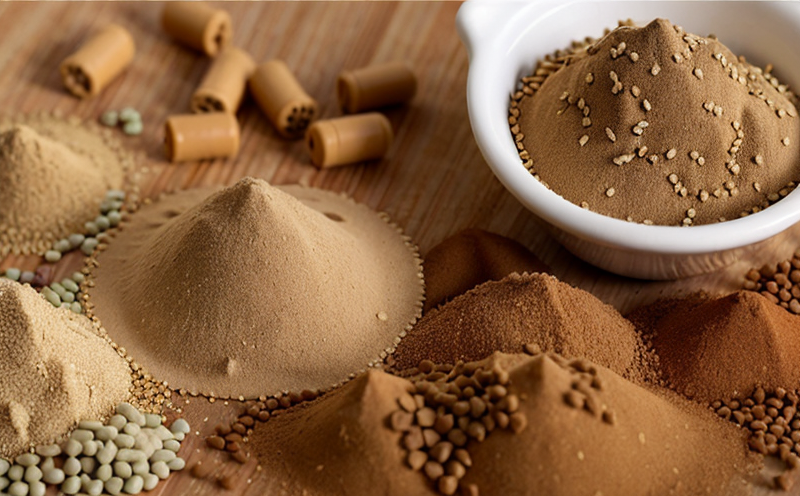Neomycin Residue Testing in Animal Feed
Neomycin residue testing is a critical aspect of ensuring food safety and animal health. Neomycin, an antibiotic used widely in veterinary medicine and agriculture, can find its way into animal feed through various means such as treatment of animals or accidental contamination during processing. Ensuring that neomycin residues do not exceed permissible limits helps prevent potential risks to human health.
The European Union (EU) has set specific limits for the use of neomycin in livestock feeds, with maximum residue levels (MRLs) defined by EU Regulation 37/2010. These regulations are designed to protect public health and animal welfare while promoting a fair competition environment within the EU.
Given that neomycin can persist in feed products even after use, it is essential for laboratories like ours to offer accurate testing services. Our service involves analyzing samples from various stages of production, including raw materials, intermediate products, and final feeds. This ensures compliance with international standards such as ISO 3696 or ASTM.
To perform accurate testing, our laboratory uses advanced analytical techniques like Liquid Chromatography-Mass Spectrometry (LC-MS/MS). This method allows for precise detection of neomycin residues in feed samples. The process begins with thorough sample preparation, which includes homogenization and extraction using appropriate solvents.
Once the extracts are ready, they undergo chromatographic separation followed by mass spectrometric analysis to identify and quantify neomycin. The results provide a clear indication of whether the levels fall within acceptable ranges set forth by regulatory authorities.
This service is particularly valuable for companies involved in animal feed production who need to demonstrate compliance with international standards. It also benefits quality managers, R&D engineers, and procurement teams looking to maintain high standards throughout their supply chain.
| Sample Type | Expected Range (µg/kg) |
|---|---|
| Raw Ingredients | <10 µg/kg |
| Mixtures & Blends | <5 µg/kg |
| Final Feed Products | <2.5 µg/kg |
The process ensures that only safe and compliant products reach the market, thereby protecting both animal health and consumer safety.
Industry Applications
- Analyzing raw ingredients for potential contamination before blending into feed formulations.
- Evaluating intermediate product batches during manufacturing to ensure consistent quality.
- Monitoring final feed products post-production to confirm compliance with regulatory limits.
- Providing data for research and development initiatives aimed at improving animal health and performance.
International Acceptance and Recognition
Our neomycin residue testing service is internationally recognized by several key organizations. It is aligned with the requirements outlined in ISO standards, as well as regional guidelines provided by bodies like the EU Commission. This ensures that our results are accepted across different jurisdictions.
- ISO 3696 – General requirements for laboratory testing and calibration laboratories.
- EU Regulation 37/2010 – Establishing maximum residue levels of veterinary medicinal products in foodstuffs of animal origin.
- ASTM International – Providing standards for the testing and evaluation of materials, products, and related technologies.
Competitive Advantage and Market Impact
By providing reliable neomycin residue testing services, we help our clients stay ahead in today’s competitive market. Ensuring compliance with international standards not only protects against legal penalties but also builds trust among consumers.
Our expertise ensures that companies can confidently claim their products meet stringent safety requirements, which is increasingly important for brands aiming to position themselves as leaders in sustainable practices and ethical sourcing.
The ability to provide detailed analytical data gives our clients a competitive edge when negotiating contracts or seeking certifications. It also allows them to make informed decisions about ingredient selection and process optimization.





